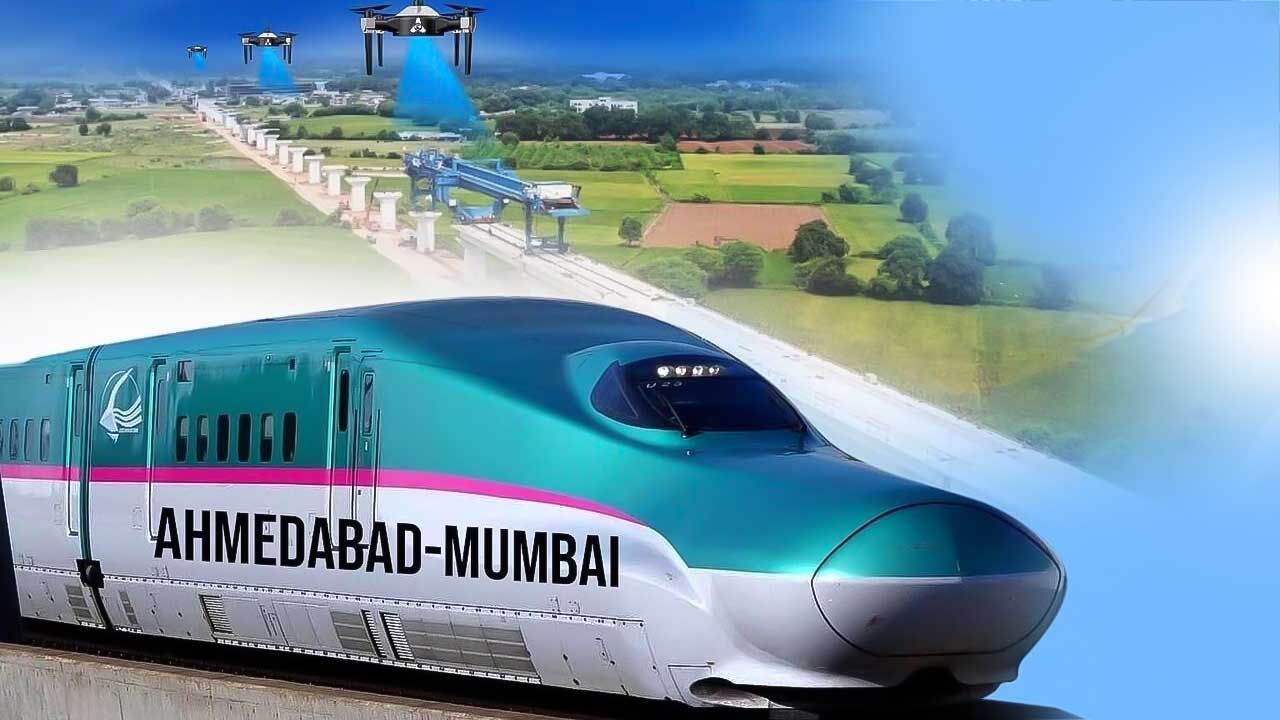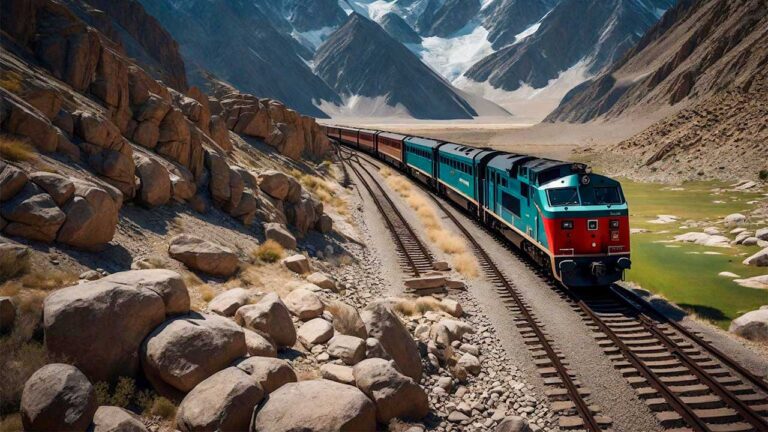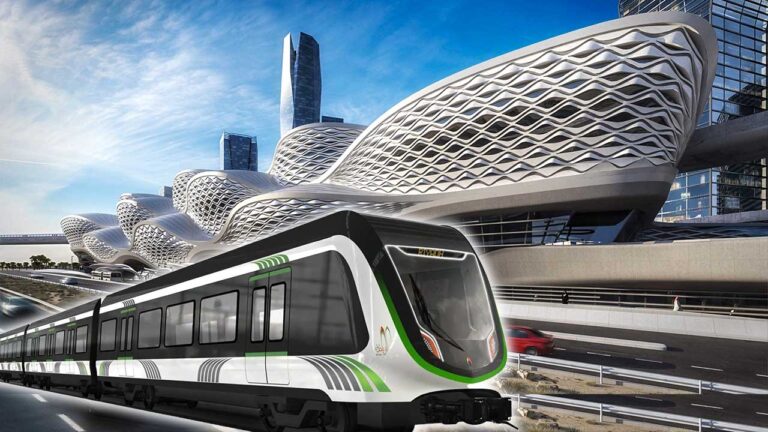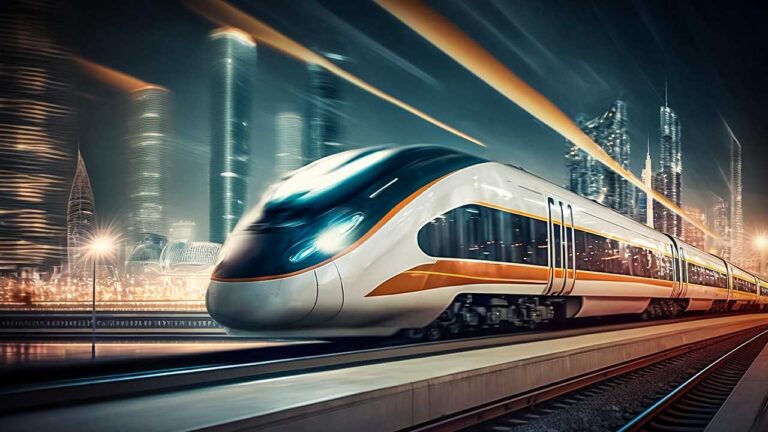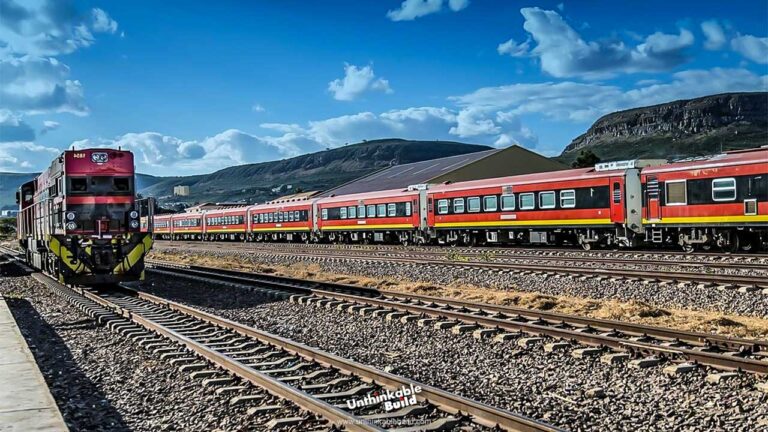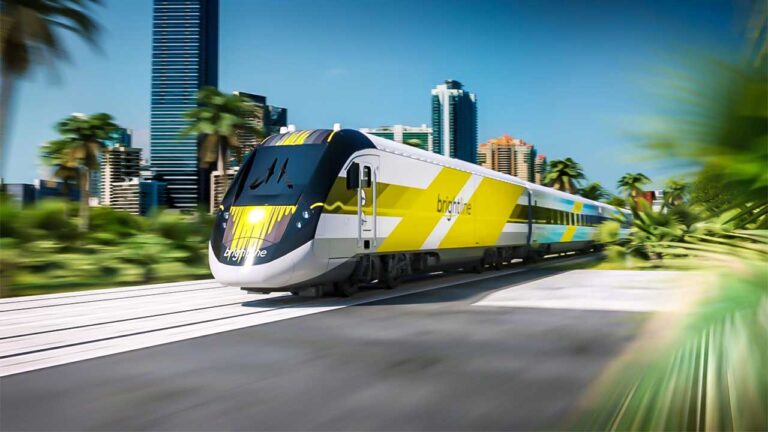India’s First Bullet Train: The Mumbai–Ahmedabad High-Speed Rail Corridor
India is the seventh largest country in the world in terms of area, while according to the data of June 2023, it is the country with the largest population in the world.
Providing basic amenities to India’s population of over 1.42 billion has always been a problem. But along with the improvement in the industrial sector, the economic development of the country is also accelerating, as a result of which the work on many mega projects for the people is going on at a fast pace.
The country, one of the world’s fastest-growing economic powers, has focused on transportation over the past decade, including a number of road and rail projects.
A significant amount of money is being spent on improving infrastructure in the country, building new roads and improving the condition of existing roads. This approach to transportation is expanding infrastructure, which can reduce poverty in rural areas, increase employment opportunities, and accelerate economic development between urban and rural areas.
The Mumbai–Ahmedabad High-Speed Rail Corridor was introduced along with other 5 high speed rail corridors in the rail budget of 2009-2010 by the Government of India. Prior to the feasibility study, the authorities had expressed the expectation that the maximum train speed on the nearly 650 km long corridor could be set at 350 km/h, over twice as swift as country’s existing railway.
That is, when this modern and high-speed railway becomes operational, the travel time between Mumbai and Ahmedabad will be reduced to about 2 hours.
Like most countries in the world, high-speed railway is a long-standing dream of the people of India, who are eager to see in their country all the modern facilities that any developed nation can afford.
Regardless of the expectations and wishes, despite the passage of 6 years, the Mumbai-Ahmedabad high-speed railway project is still in its early stages, with very little chance of completion in the near future.
Also Read: Austria Constructs A26 LINZER AUTOBAHN Mega Tunnel
The rail network in India is the fourth largest in the world, covering about 70,000 km. Thus, India is fast on the path of economic development, but its railway system is still 160 years old, slow, overcrowded and uncomfortable.
Like other countries in the world with obsolete railway system, in India too, the news of rail accidents continue to adorn newspapers and media. One such accident took place in the eastern state of Odisha in June 2023, in which hundreds of people died and over a thousand injured when 3 trains collided due to signal failure.
In such a situation, India needs a railway system that is as efficient and comfortable as the modern high-speed railways of its neighboring countries. In view of the same idea, a bullet train was planned on a corridor of about 508 km from India’s leading commercial coastal city of Mumbai, Maharashtra to Ahmedabad, Gujarat.
For this mega construction project, National High Speed Rail Corporation Limited was established under the management of Indian Railways on 12th February 2016. The megaproject’s foundation stone was laid by the prime minister of India and japan on 14th September 2017. The Indian government at that time had originally set a deadline of August 15, 2022.
The route of the high-speed rail project under construction between the two major cities and economic powerhouses will consist of 12 stations, while 155.78 km of the corridor will be in Maharashtra, 348.04 km in Gujarat and 4.4 km in union territory of Dadra and Nagar Haveli.
The state-of-the-art engineering project is estimated to cost $15 billion, including 24 trainsets. The Japan International Cooperation Agency is providing $12 billion as a loan for the project, with repayments scheduled to start 15 years after the project becomes operational. The remaining part of the amount required for the project is being provided by the governments of Maharashtra and Gujarat.
On the other hand, passenger support will be essential to cover the investment and operational costs incurred on the project once it is completed. According to an estimate, 50 million passengers will be required to travel on the bullet train to achieve this financial goal.
The Mumbai–Ahmedabad High-Speed Rail Corridor will incorporate the same Shinkansen train model that is also operational in Japan. Apart from their excellent speed and increased safety, these trains are also known for reducing environmental impact. Energy savings and advanced braking systems reduce carbon emissions compared to other modes of transportation.
92% of the track of the Mumbai-Ahmedabad High Speed Rail mega project will be elevated through bridges and viaducts 10 to 15 meters above the ground, which will bring many benefits. This approach would allow for the crossing of rivers and existing infrastructure, which would significantly reduce its negative impact on the environment, while also simplifying the land acquisition process.
According to NHSRCL, upon completion of the project, the daily estimated number of passengers traveling in each direction of this corridor will be 17,900, while the total number of passengers for 35 trips per day will be 92,900.
Also Read: Herat-Khaf Railway: A Gateway to Economic Growth for Afghanistan
Engineers working on the project are facing various challenges in crossing the Thane Creek in the eastern part of Mumbai. This is the only location in the entire route where the width and substantial body of water has come up as a roadblock.
To deal with this problem, instead of building a bridge over the sea, it was decided to build an underground passage. Work on the tunnel began with drilling and blasting, and its walls were supported by reinforced concrete structures. This resulted in India’s first undersea rail tunnel for two trains with a length of 7 km with a 13 meter diameter, while the entire section is 21 km long. It can undoubtedly be called a remarkable engineering feat.
Despite the intention to speed up the work on the bullet train project, the authorities are facing many challenges, due to which the completion of this railway corridor has been delayed by almost 7 years. One of the several factors involved in this delay was the acquisition of the required land in Maharashtra, which is resolved now.
Like the challenges faced by developing countries, project priorities in India are subject to change of government. After the change in the government, this debate is also characteristic of such countries that whether this project can cater everyone’s needs.
The full benefits of this innovative project can only be realized if India prioritizes the high-speed railway system while also focusing on solving existing infrastructure issues.
Bullet Train and other similar projects will go a long way in making India stand out as an infrastructure powerhouse globally. There are immense opportunities for tourism in the Indian dimension and the development of transport means will further highlight this sector at the global level. Not only this, but such megaprojects also attract foreign investment, which plays a significant role in India’s rapid economic growth.
India believes that the Mumbai-Ahmedabad high-speed rail corridor is the starting point of a proposed bullet train network to be spread across the country. In such a situation, full attention is being paid to the development of roads, which will further strengthen the general infrastructure.
However, the pace of construction activities on this bullet train project cannot be described as fast, but the continuous work on this project promises that in the coming days India will be able to host many such public projects that play a fundamental role in making any developing country a developed nation.
With the passage of time, India is making significant efforts to join the ranks of countries that have strong infrastructure. The people of India are confident that after the completion of many such projects, the existing infrastructure of India will become a thing of the past in the next few decades.
What role do you think projects like the bullet train can play in a developing country and how can they be turned into beneficial projects instead of an economic burden on the nation?

